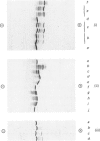Abstract
The anti-sickling agent BW12C [Beddell, Goodford, Kneen, White, Wilkinson & Wootton (1984) Br. J. Pharmacol. 82, 397-407] was designed to left-shift the oxygen saturation curve of haemoglobin (HbA) by preferential binding to the oxy conformation at a single site between the terminal amino groups of the alpha-chains through Schiff's base formation, ionic and hydrophobic interactions. In the present work, Schiff's base linkages formed with [14C]BW12C were reduced with NaBH4 and the alpha- and beta-globin chains separated. Under oxy conditions at a molar ratio of 2:1, the covalently bound BW12C is localized almost exclusively on a single alpha-chain; tryptic digestion confirms the terminal amino group (alpha 1-valine) as the reaction site, in accord with the design hypothesis. However, about half the labelled BW12C is released on tetramer disruption, suggesting the presence of additional non-covalent binding. Under deoxy conditions, alpha- and beta-chains are labelled approximately equally, and at higher molar ratios additional binding in both oxy and deoxy conditions is seen. Isoelectric-focusing studies under oxy conditions show a complex pattern of modified bands for both HbA and HbA1c (blocked beta-terminal amino groups) but no modification for HbA carbamylated at both alpha- and beta-terminal amino groups or at the alpha-chains only, again confirming the alpha-terminal amino region as the main interaction site. Equilibrium dialysis measurements under oxy conditions indicate two strong binding sites with a binding constant of less than 10(-6) M and a number of weaker binding sites. The present data thus confirm that BW12C binds at the intended locus but reveal additional non-covalent binding at an undefined site, and weaker binding through Schiff's base formation with other amino groups.
Full text
PDF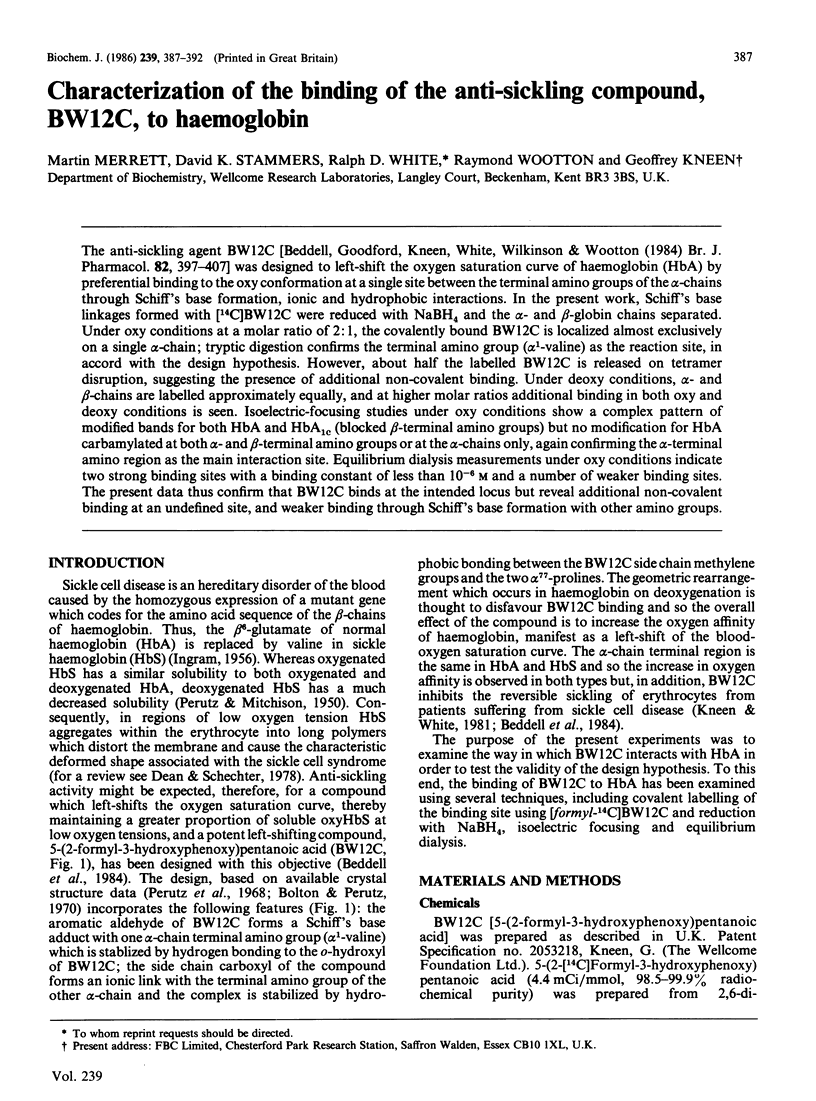
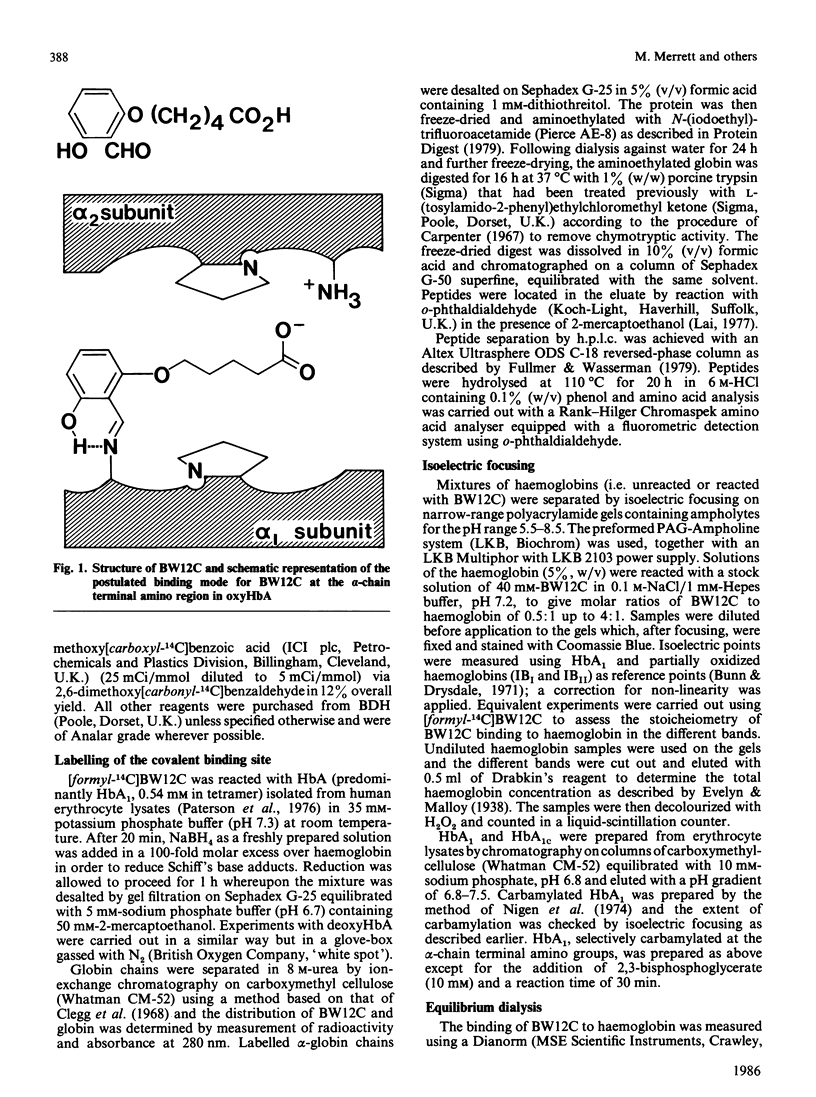
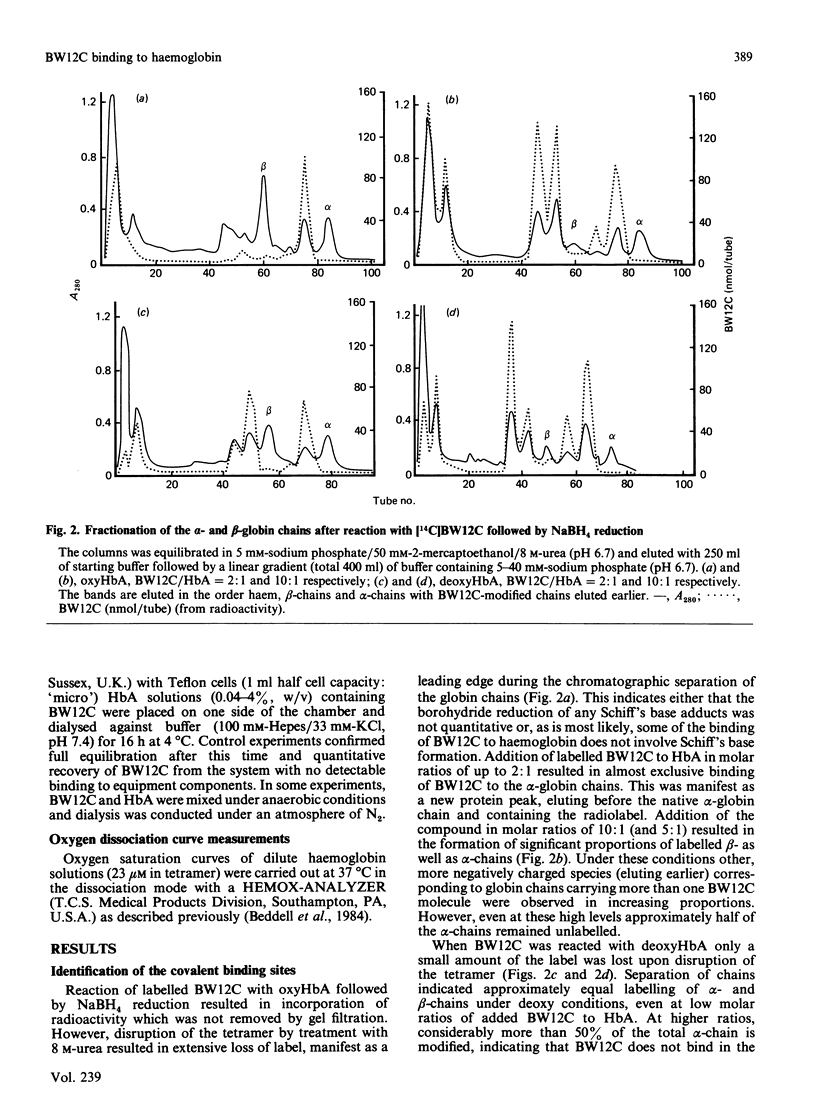
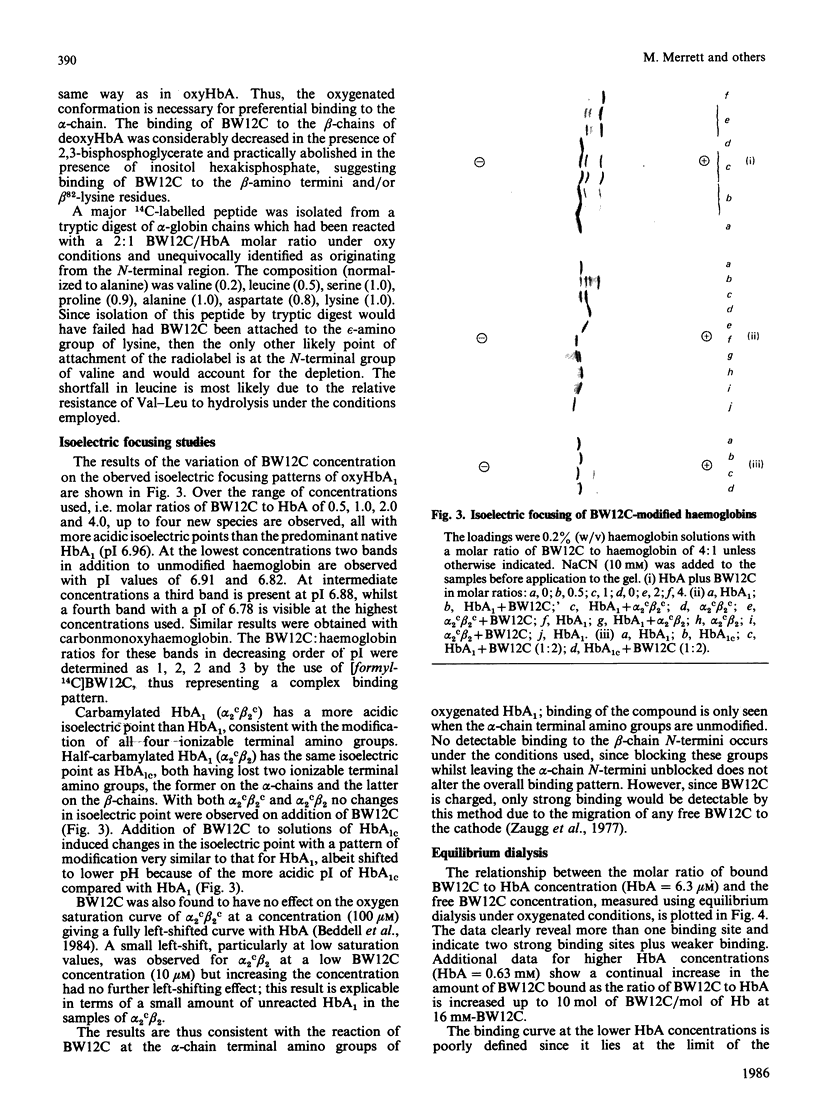
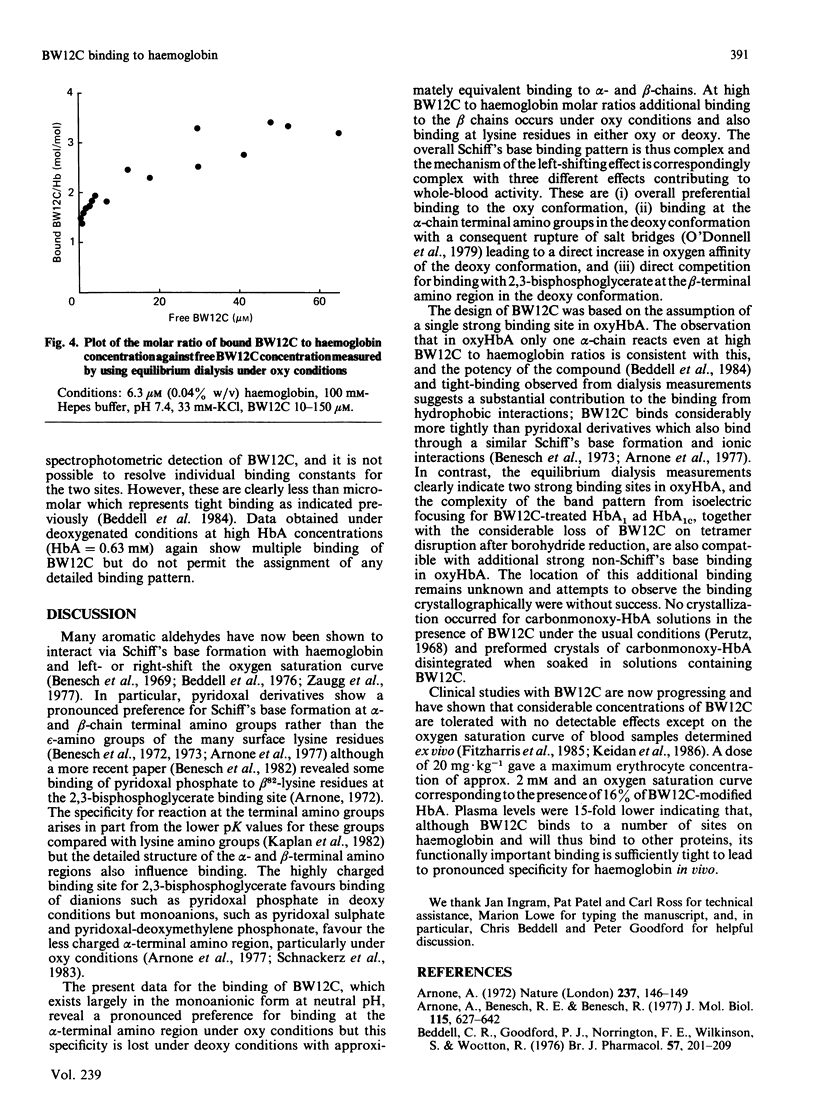
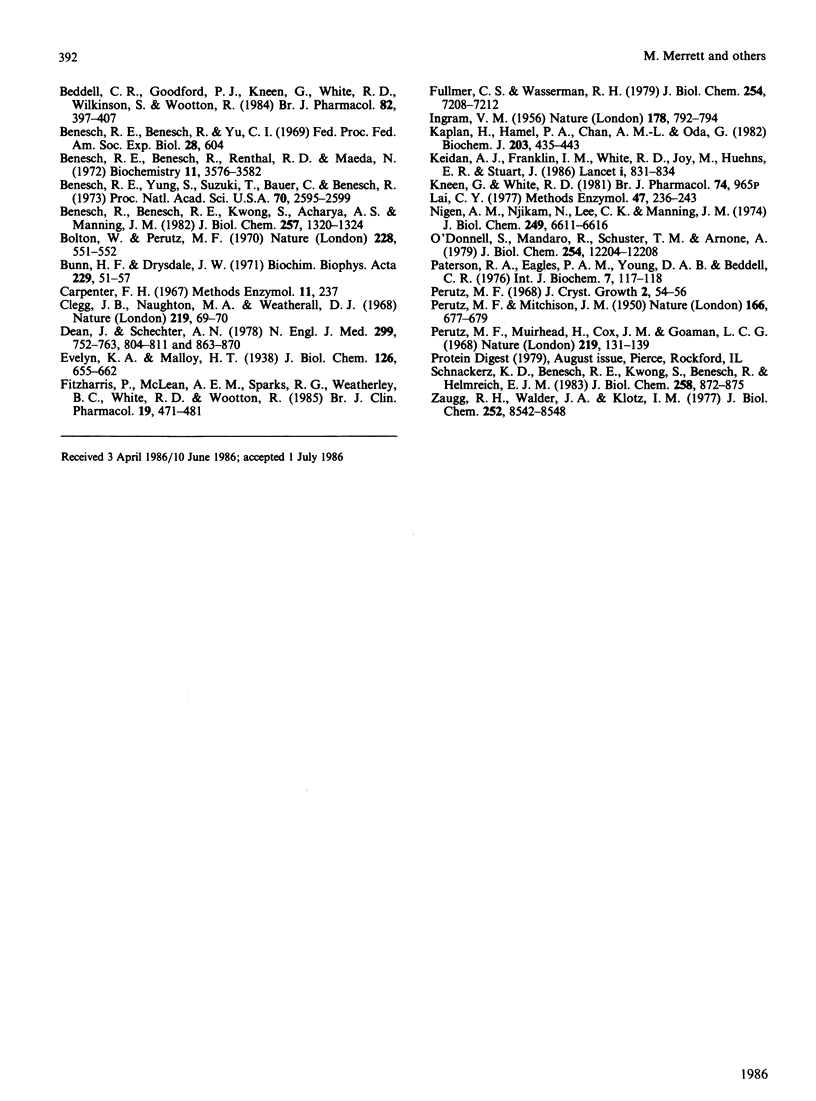
Images in this article
Selected References
These references are in PubMed. This may not be the complete list of references from this article.
- Arnone A., Benesch R. E., Benesch R. Structure of human deoxyhemoglobin specifically modified with pyridoxal compounds. J Mol Biol. 1977 Oct 5;115(4):627–642. doi: 10.1016/0022-2836(77)90107-3. [DOI] [PubMed] [Google Scholar]
- Arnone A. X-ray diffraction study of binding of 2,3-diphosphoglycerate to human deoxyhaemoglobin. Nature. 1972 May 19;237(5351):146–149. doi: 10.1038/237146a0. [DOI] [PubMed] [Google Scholar]
- Beddell C. R., Goodford P. J., Kneen G., White R. D., Wilkinson S., Wootton R. Substituted benzaldehydes designed to increase the oxygen affinity of human haemoglobin and inhibit the sickling of sickle erythrocytes. Br J Pharmacol. 1984 Jun;82(2):397–407. doi: 10.1111/j.1476-5381.1984.tb10775.x. [DOI] [PMC free article] [PubMed] [Google Scholar]
- Beddell C. R., Goodford P. J., Norrington F. E., Wilkinson S., Wootton R. Compounds designed to fit a site of known structure in human haemoglobin. Br J Pharmacol. 1976 Jun;57(2):201–209. doi: 10.1111/j.1476-5381.1976.tb07468.x. [DOI] [PMC free article] [PubMed] [Google Scholar]
- Benesch R. E., Benesch R., Renthal R. D., Maeda N. Affinity labeling of the polyphosphate binding site of hemoglobin. Biochemistry. 1972 Sep 12;11(19):3576–3582. doi: 10.1021/bi00769a013. [DOI] [PubMed] [Google Scholar]
- Benesch R. E., Yung S., Suzuki T., Bauer C., Benesch R. Pyridoxal compounds as specific reagents for the alpha and beta N-termini of hemoglobin. Proc Natl Acad Sci U S A. 1973 Sep;70(9):2595–2599. doi: 10.1073/pnas.70.9.2595. [DOI] [PMC free article] [PubMed] [Google Scholar]
- Benesch R., Benesch R. E., Kwong S., Acharya A. S., Manning J. M. Labeling of hemoglobin with pyridoxal phosphate. J Biol Chem. 1982 Feb 10;257(3):1320–1324. [PubMed] [Google Scholar]
- Bolton W., Perutz M. F. Three dimensional fourier synthesis of horse deoxyhaemoglobin at 2.8 Angstrom units resolution. Nature. 1970 Nov 7;228(5271):551–552. doi: 10.1038/228551a0. [DOI] [PubMed] [Google Scholar]
- Bunn H. F., Drysdale J. W. The separation of partially oxidized hemoglobins. Biochim Biophys Acta. 1971 Jan 19;229(1):51–57. doi: 10.1016/0005-2795(71)90316-3. [DOI] [PubMed] [Google Scholar]
- Clegg J. B., Naughton M. A., Weatherall D. J. Separation of the alpha and beta-chains of human hemoglobin. Nature. 1968 Jul 6;219(5149):69–70. doi: 10.1038/219069a0. [DOI] [PubMed] [Google Scholar]
- Dean J., Schechter A. N. Sickle-cell anemia: molecular and cellular bases of therapeutic approaches (first of three parts). N Engl J Med. 1978 Oct 5;299(14):752–763. doi: 10.1056/NEJM197810052991405. [DOI] [PubMed] [Google Scholar]
- Fitzharris P., McLean A. E., Sparks R. G., Weatherley B. C., White R. D., Wootton R. The effects in volunteers of BW12C, a compound designed to left-shift the blood-oxygen saturation curve. Br J Clin Pharmacol. 1985 Apr;19(4):471–481. doi: 10.1111/j.1365-2125.1985.tb02672.x. [DOI] [PMC free article] [PubMed] [Google Scholar]
- Fullmer C. S., Wasserman R. H. Analytical peptide mapping by high performance liquid chromatography. Application to intestinal calcium-binding proteins. J Biol Chem. 1979 Aug 10;254(15):7208–7212. [PubMed] [Google Scholar]
- INGRAM V. M. A specific chemical difference between the globins of normal human and sickle-cell anaemia haemoglobin. Nature. 1956 Oct 13;178(4537):792–794. doi: 10.1038/178792a0. [DOI] [PubMed] [Google Scholar]
- Kaplan H., Hamel P. A., Chan A. M., Oda G. Chemical properties of the N-termini of human haemoglobin. Biochem J. 1982 May 1;203(2):435–443. doi: 10.1042/bj2030435. [DOI] [PMC free article] [PubMed] [Google Scholar]
- Keidan A. J., Franklin I. M., White R. D., Joy M., Huehns E. R., Stuart J. Effect of BW12C on oxygen affinity of haemoglobin in sickle-cell disease. Lancet. 1986 Apr 12;1(8485):831–834. doi: 10.1016/s0140-6736(86)90941-4. [DOI] [PubMed] [Google Scholar]
- Lai C. Y. Detection of peptides by fluorescence methods. Methods Enzymol. 1977;47:236–243. doi: 10.1016/0076-6879(77)47028-9. [DOI] [PubMed] [Google Scholar]
- Nigen A. M., Njikam N., Lee C. K., Manning J. M. Studies on the mechanism of action of cyanate in sickle cell disease. Oxygen affinity and gelling properties of hemoglobin S carbamylated on specific chains. J Biol Chem. 1974 Oct 25;249(20):6611–6616. [PubMed] [Google Scholar]
- O'Donnell S., Mandaro R., Schuster T. M., Arnone A. X-ray diffraction and solution studies of specifically carbamylated human hemoglobin A. Evidence for the location of a proton- and oxygen-linked chloride binding site at valine 1 alpha. J Biol Chem. 1979 Dec 10;254(23):12204–12208. [PubMed] [Google Scholar]
- PERUTZ M. F., MITCHISON J. M. State of haemoglobin in sickle-cell anaemia. Nature. 1950 Oct 21;166(4225):677–679. doi: 10.1038/166677a0. [DOI] [PubMed] [Google Scholar]
- Perutz M. F., Muirhead H., Cox J. M., Goaman L. C. Three-dimensional Fourier synthesis of horse oxyhaemoglobin at 2.8 A resolution: the atomic model. Nature. 1968 Jul 13;219(5150):131–139. doi: 10.1038/219131a0. [DOI] [PubMed] [Google Scholar]
- Schnackerz K. D., Benesch R. E., Kwong S., Benesch R., Helmreich E. J. Specific receptor sites for pyridoxal 5'-phosphate and pyridoxal 5'-deoxymethylenephosphonate at the alpha and beta NH2-terminal regions of hemoglobin. J Biol Chem. 1983 Jan 25;258(2):872–875. [PubMed] [Google Scholar]
- Zaugg R. H., Walder J. A., Klotz I. M. Schiff base adducts of hemoglobin. Modifications that inhibit erythrocyte sickling. J Biol Chem. 1977 Dec 10;252(23):8542–8548. [PubMed] [Google Scholar]



